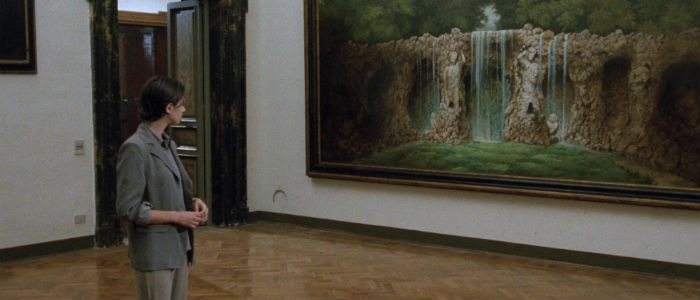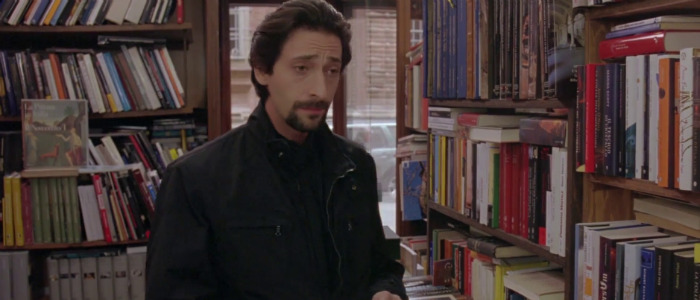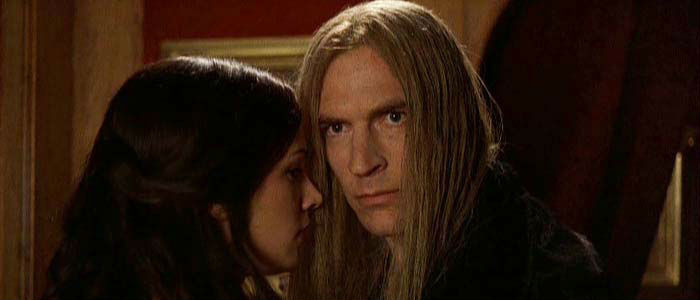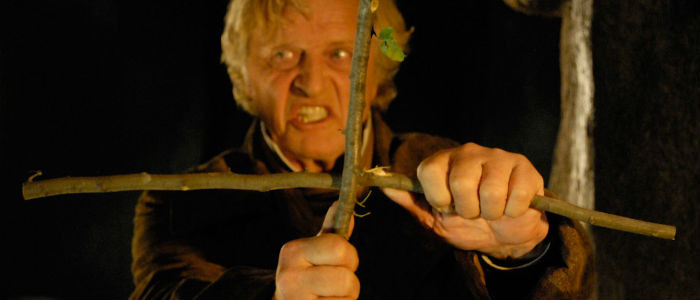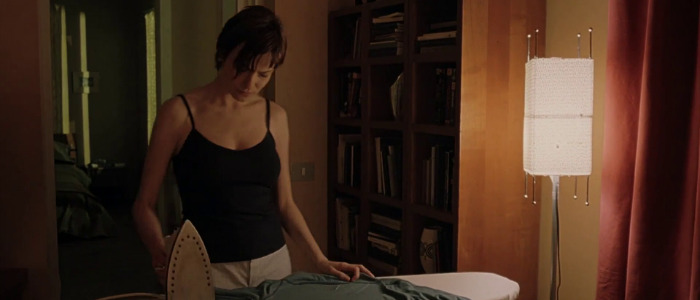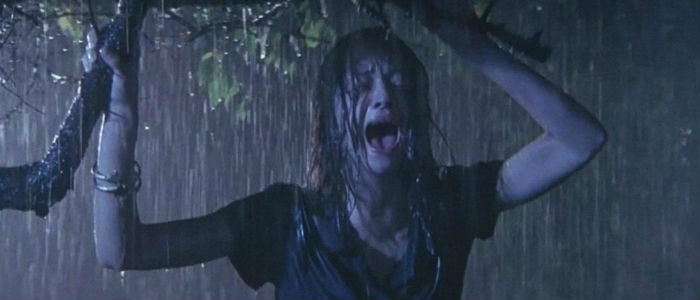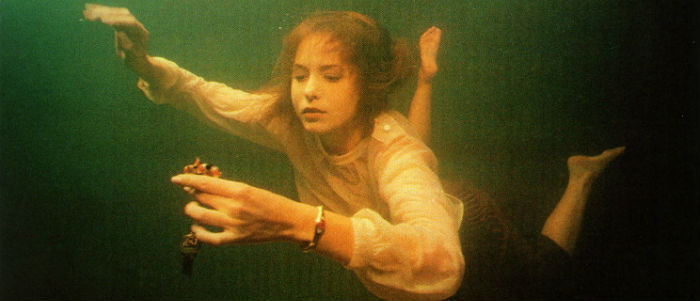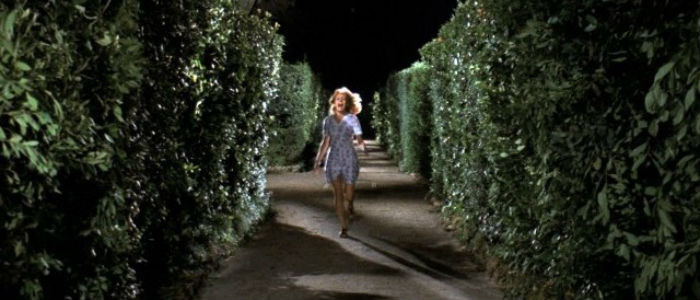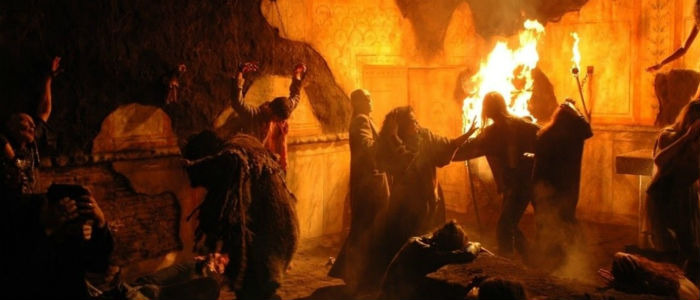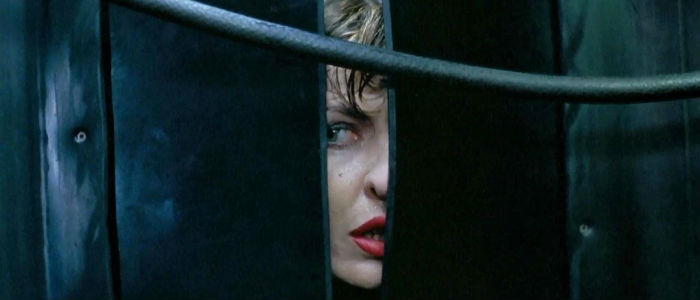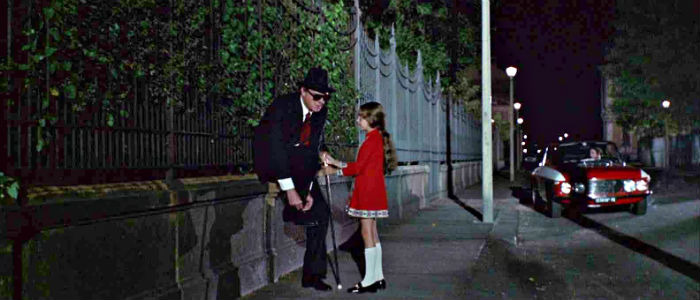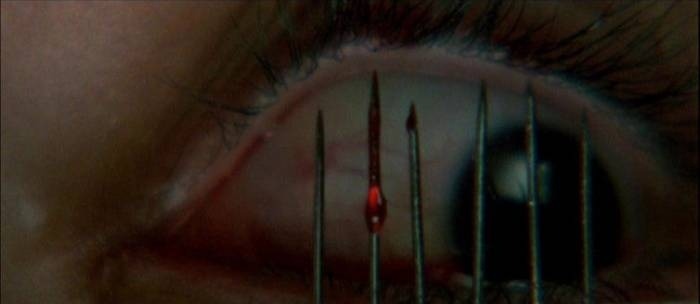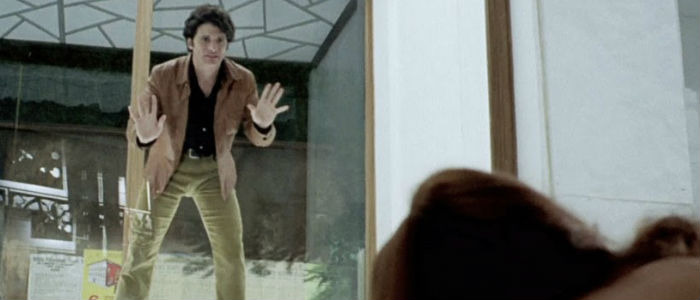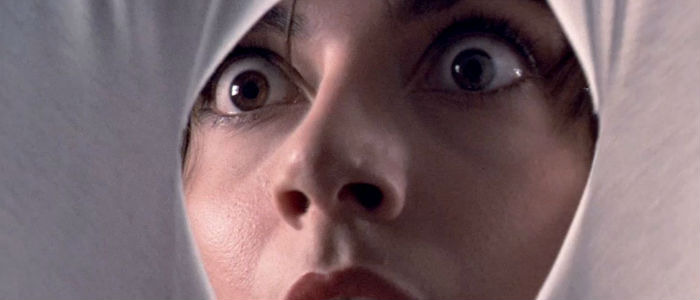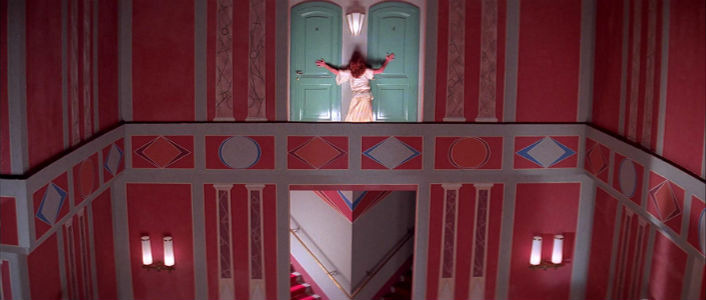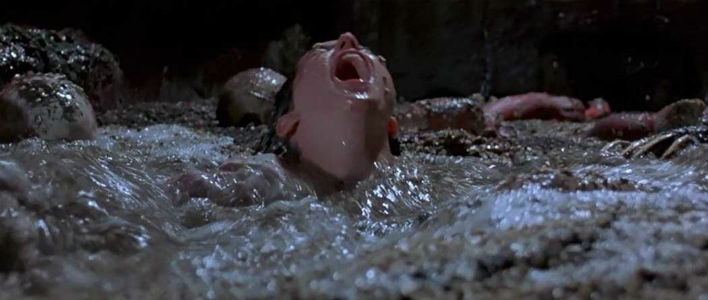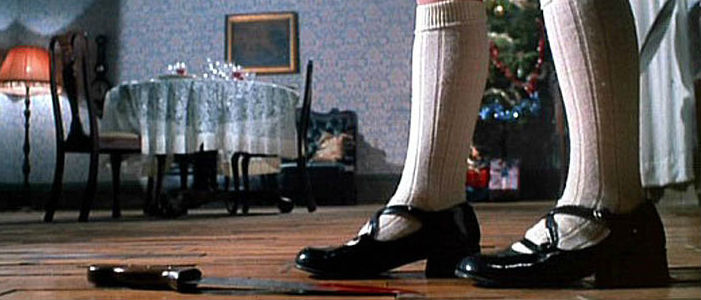The 17 Horror Films Of Dario Argento, Ranked From Worst To Best
Luca Guadagnino's remake of Dario Argento's Suspiria hits theaters very soon, and while it's a magnificent creation with its own story, visual highlights, and meaning, it's also all the reason you need to revisit Argento's filmography. The man's name is nearly synonymous with the giallo sub-genre, but as evidenced by films like Suspiria (1977), he also found time for more unnatural tales. He directed 18 features between 1970 and 2012 along with a TV movie (Do You Like Hitchcock?, 2005) and one half of an anthology film (Two Evil Eyes, 1990).
His 18 features are the focus here – well, 17 as his 1973 comedy The Five Days is not only his sole non-horror/thriller title but also incredibly difficult to find with English subtitles – and to that end I've given them all a re-watch recently for two reasons. One, I wanted to re-watch them, so I did. And two? Why a ranking of course!
So keep reading for a look at Argento's 17 genre efforts as ranked by me, from the highs of my number one pick to the lows of...
17. The Stendhal Syndrome (1996)
Plot: A policewoman who suffers dizziness and hallucinations in the presence of classical paintings pursues a serial rapist/killer with no such ridiculous illness.That's So Argento! After stabbing her rapist in the neck, Anna (Asia Argento) gouges out his eye, shoots him, pummels his head, and dumps his body in a raging river.Thoughts: Where to start with this offensively stupid film. How is this woman a police officer what with her bouts of amnesia, hallucinations, and general awfulness at her job? Why does the early wig that's not supposed to be a wig look so much worse than the later wig that's acknowledged as a wig? Why is there a CG shot of pills going down her throat and why does it look so utterly horrible? Why is rape leaned on so heavily as lazy terror beats? Are we really supposed to view her shift into becoming a deranged serial killer as a commentary on the effects of trauma when she was clearly bonkers before the multiple rapes even occurred? Are you really committing to the idea given voice in the final moments that crimes committed by past victims aren't their fault? How do you open with her hallucinating an underwater swim in which she kisses a large, human-ish fish and then not revisit that absurdity in the lake of bullshit that follows? Ugh, this movie.
16. Giallo (2009)
Plot: Only an FBI agent (Adrien Brody) based in Italy can stop a killer (Adrien Brody) whose skin resembles the lurid covers of old giallo novels.That's So Argento! A man falls through a skylight and holds tight to a broken piece of the frame layered with glass shards. Gravity pulls him down, slicing his hand in the process, and it's all for naught as he falls to his death anyway.Thoughts: There's not a damn thing here to make Argento proud. Not a single interesting visual flourish. Not one memorable kill. These are the things that normally make an otherwise lesser Argento film watchable when the story itself isn't cutting it, but here we've got nothing. He's been making giallo films all his life, but oddly, the one he actually titles Giallo is the least fitting for the format. No gloves, no mystery as to who the killer is, no elaborate set-pieces. Instead, we just get cruelty, endless whimpering, and the precedent for Tilda Swinton's purposeless and latex-covered dual role in the new Suspiria remake.
15. The Phantom of the Opera (1998)
Plot: A man raised by rats beneath the city of Paris falls for an opera singer, but his efforts to woo her are complicated by his murderous tendencies and her indecisive heart.That's So Argento! Christine (Asia Argento) awakes after being raped by her on again off again beau, the Phantom, and discovers him frolicking in another room with rats crawling playfully over his bare skin.Thoughts: Eleven years after updating the classic tale with the stylish thriller Opera, Argento goes back to the literary well with a proper adaptation. Psych! As a non-musical the film is reliant on the strength of Gaston Leroux's original story and the atmosphere of the period setting. The latter's a lost cause as the film's budget precludes anything impressive on the visual front from cinematography to production design, and the former? Well, let's just say this isn't the Phantom you're familiar with. The tragic love story is gone as this Phantom isn't even disfigured – he lives in the sewers because that's where the rats raised him (and taught him to speak, dress properly, and use product in his hair) – meaning the only real obstacle in life for him is the fact that he's an a**hole.
14. Argento's Dracula (2012)
Plot: The legendary count feasts on locals in a small village until someone finally realizes they should probably send for Van Helsing.That's So Argento! A man doing a horrible job at guard duty is surprised by a giant praying mantis that rushes him and pierces his torso with its oversized insect arm. Leg? I don't know. It's Dracula. Sneaking in as a giant bug for some reason.Thoughts: You saw where I mentioned the giant CG praying mantis right? Argento's final film suggests pretty definitively that he's lost his mojo, and at the very least he should stay away from period films. Budget limitations once again mean underwhelming visuals, and their awfulness is magnified by the use of ocularly offensive CG, random green screens, and underwhelming bloodletting too often co-opted by more CG animation. The upside consists solely of absurd moments (giant praying mantis!) and the presence of Rutger Hauer as Van Helsing.
13. The Card Player (2004)
Plot: A killer with a modem taunts police by making them play online poker hands, and if they lose he kills a victim live on the webcam.That's So Argento! An extended and dialogue-free sequence involving the female police officer sees her home alone when she notices a masked man outside her window. He disappears – she thinks – but she soon realizes he's entered her house, stolen her gun, and dumped some severed fingers in her purse. Then she discovers he has yet to leave. It's an effectively suspenseful set-piece pairing the killer's home invasion with her capable cop action.Thoughts: This one's as lifeless as the pixelated corpses that show up throughout as it delivers a story that's both flat and uninspired even with these "cutting edge" online shenanigans. The poker games lack energy and suspense despite the stakes, and the repetition doesn't help. The final minutes are devoted to a game between the killer and the cop as they lay on railroad tracks, and it's just a trainload of who the hell cares. Events are just as uninteresting offline as the killer's identity is clear from the first act and Argento seems disinclined to do anything intriguing with his camera. Oh, and a big old electronic woof to the normally reliable Claudio Simonetti's score, too.
12. Trauma (1993)
Plot: An anorexic teenager sees her issues magnified after witnessing the murder of her parents and being drawn into the mystery surrounding the decapitation-prone killer's identity.That's So Argento! Our killer only strikes when it's raining, but the skies are clear as they target their latest victim. What to do? They sets off her apartment's fire alarm and dispatch her as the sprinkler splashes water upon them both. Our hero arrives moments later to find her head separated from her body... a physical obstacle that doesn't stand in the way of her whispering the killer's name. I repeat, the decapitated head mumbles out the killer's name with its dying breath before slumping lifeless to the side – as if the neck was still holding it up!Thoughts: This one's a little convoluted – surprise! – as lost memories, psychic phenomena, and an obsession with anorexia fill the screen, but honestly, the bigger obstacle for some viewers will be seventeen-year-old Asia Argento's topless scene in her father's movie. If you can accept all of that the film delivers some effective POV camerawork, several heads detached from their bodies, a lot of time spent with a neighbor boy that ultimately pays off, and a drawn-out ending that slowly reveals the twist you'll only see coming if you pay attention to the cast order. It's merely okay, though, and is a film that ultimately feels forgettable as nothing about it, from visuals to score, finds a home in your brain (and that includes ending with a weird music video during the end credits).
11. Inferno (1980)
Plot: A woman writes to her brother about her building's strange, witch-related history and asks him to come visit, but she's brutally murdered by someone with incredibly dry hands before he arrives in town.That's So Argento! Elise witnesses her new friend being dragged away by unseen assailants who soon turn and give chase. Her effort to escape stairwells and rooms painted only in blue and red lights sees her enter an attic occupied by hungry cats and a knife-wielding man. So yeah, that doesn't end well for her.Thoughts: The second entry in Argento and Daria Nicolodi's Three Mothers trilogy lacks the bombast of Suspiria and the absurdly gory carnage of Mother of Tears, but it works as connective tissue delivering some engaging visuals and demises along the way. Its focus on the house as a domicile of evil with walls acting like demonic bones – along with some excessive animal mayhem – makes it feel at times like a blend of Argento and Lucio Fulci, and that's not a bad thing. Keith Emerson's on-the-nose score suits the devilish imagery, Argento's garish lighting game is on point, and the kills are both bloody and painful-looking. The script does spend quite a bit of time explaining and exploring the Three Mothers mythology, something its predecessor only hinted at, but it succeeds at building a world of dark and deadly magic.
10. Four Flies on Grey Velvet (1971)
Plot: A drummer is witnessed accidentally killing a man and is drawn into the mystery surrounding his new stalker's identity.That's So Argento! A slow-motion car crash late in the film is its most stylish beat as Argento milks each frame for its carnage, but it's an early first-person POV murder that stands out as a brief set-piece. The killer and the camera charge forward to pummel their victim's head with a candlestick before violently strangling them with a wire hanger.Thoughts: It's not Giallo dull, but Argento's third feature is severely lacking in momentum all the same. There's no urgency to the unfolding story, and while the killer's first appearance has an air of creepiness to it thanks to his mask, the unsettling tone fades quickly. Argento's eye for visuals keeps things interesting where the narrative fails, though, with some engaging tracking shots and a suspenseful chase through a hedge maze. Still, for everything that works there's just so much that bores. And not for nothing, but hinging the tale on the "science" of retinas retaining the last thing they see is a bit underwhelming.
9. Mother of Tears (2007)
Plot: A young woman is all that stands between the last of the Three Mothers and humanity's damnation.That's So Argento! A woman has her tongue and teeth crushed before being disemboweled and strangled with her own intestines as a heckling baboon watches from the shadows.Thoughts: Look, this is a big mess of a movie, but there are still more than a few things to like about this final chapter in the Three Mothers trilogy. Argento's love affair with his daughter's fleshy bits continues, and she's joined by the witchy mother herself who gains power by wearing a magical tunic – so of course, we see her put it on twice and take it off once revealing her as a witch who goes commando. There are fun beats including international witches who fly into Rome (on airplanes, disappointingly), copious amounts of fantastically realized gore and bloodletting, and a surprising amount of kiddie carnage, but the internal logic of it all stumbles on its way to a wet, nonsensical, and goofily abrupt ending. Granted, logic is rarely celebrated in Argento's films, but here it feels especially egregious as the wrap-up to a trilogy.
8. Sleepless (2001)
Plot: A killer returns 27 years after he's believed to have died, and the now-retired cop who closed the original case is back on his trail.That's So Argento! A prostitute leaves a sketchy john in a hurry after refusing to play along with a particularly disturbing fetish and discovering a collection of portable cutlery. She boards a train home and discovers that in her rush she accidentally took a folder of his filled with details about the long-ago murder spree, and now he wants the folder back. The safety of the train soon reveals itself an illusion as it's creepily devoid of passengers, the ticket-taker has been bludgeoned, and her pursuer is already aboard. Argento builds real suspense as she discovers her predicament aboard a train she can't exit.Thoughts: The first act here is enough to make you think Argento's entrance into the 21st century offered a return to form and would bode well going forward, but the optimism doesn't last. We get the terrific train set-piece, some incredibly effective and gory face stabbing, and a series of victims before things settle down in some fairly generic ways. As late Argento is prone to do, he tips the killer's identity far too soon which neuters much of the suspense in the back half. Still, it starts strong and ends merely okay, and that plus a solid Goblin score is enough to lift it above much of Argento's filmography.
7. The Cat O’ Nine Tails (1971)
Plot: A blind, retired journalist joins forces with a younger reporter who can see to solve a series of crimes involving a sketchy pharmaceutical company.That's So Argento! Like the other films in Argento's so-called "animal trilogy," his second feature is fairly light on the bloody violence. We do get a wince-worthy sequence, though, when a character crashes through a skylight into an elevator shaft (just go with it) and grabs hold of the cables as he falls which in turn burn and scrape his hands as he tries to slow the fall to his death.Thoughts: Argento's second film is no sophomore slump, but it does mark the beginning of his tendency towards unnecessarily convoluted plots. The story's ultimately the film's weakest element as emerging details just get sillier at every turn, but it finds strength in its style and two leads: Karl Malden and James Franciscus. The latter is just casual fun, but Malden brings real heart and character to the film. That's rarely Argento's strong suit, but Cookie (Malden) is humanized through his relationship with his young niece and becomes something of a Scooby Doo-type investigator in his pursuit of the truth. It's an efficient, smart, and attractive thriller with some memorably stylish visuals and sound.
6. Opera (1987)
Plot: A deranged fan stalks an opera singer in the hopes of winning her heart, and he's not shy about killing those who stand between him and his love.That's So Argento! Betty and her boyfriend are interrupted post-coitus (ish) by the killer who ties her up, tapes needles below her eyes so she can't close them without stabbing her eyelids, and then makes her watch as he brutally slaughters her lover. The murder starts with a throat stabbing showing the blade entering the neck and exiting inside the poor guy's mouth. It's a terrifically effective effect, and it's chased with some truly brutal stabbing action to his body and hands.Thoughts: Arguably Argento's last very good to great film, Opera is awash in lush visuals, killer set-pieces, and bloody shenanigans as it riffs on its well-known literary source. The script has our leading lady and others at the opera act like quite the morons throughout, but you know what "artists" are like. It's easily forgivable, though, as Argento's deliciously fluid camera distracts with motion, beauty, and an unflinching eye for the carnage. In addition to the sequence mentioned above, we also get an apartment-set stalking with garish colors lighting the rooms, an absolutely stellar gunshot through an eye-hole (both kinds), some vengeful ravens, a ludicrous ending, and more.
5. The Bird With the Crystal Plumage (1970)
Plot: A writer witnesses a murder and is drawn into the mystery surrounding the killer's identity.That's So Argento! The opening sequence and murder would become something of a trademark for Argento, and he delivers a doozy with his first feature. Our hero sees something amiss through a gallery window and realizes it's a woman under attack. His attempt to help lands him trapped between two long glass doors – unable to intercede, unable to stop the killer, and unable to look away. It's not nearly as graphic or bloody as later kills in his filmography, but the sequence shows a strong hand overseeing the cinematography, lighting, editing, and production design.Thoughts: Argento not only knocks it out of the park with his first feature but he also succeeds in establishing multiple conceits, ideas, and visual markers that would return throughout his career. We see what the writer sees, and as he would do with his greatest film five years later Argento challenges viewers to recall details alongside the film's protagonist. It adds an interactive nature to the action, but even without it the film's visuals, story, and Ennio Morricone score hold viewers through to the final frames. The mystery at its core is straightforward as the pieces fall into place, and all of it works to build a truly thrilling tale.
4. Tenebrae (1982)
Plot: A writer whose books are being used as templates for murder is drawn into the mystery surrounding the killer's identity.That's So Argento! As the propulsive score kicks in, a woman goes to her window to investigate a noise. We see her from outside, then the camera lifts and rises up to the next floor where it enters a window to see another woman pass by, then it exits and continues its climb up and over the building to peak in more windows before coming to rest on a pair of gloved hands breaking in through a window. Two memorable kills follow, but the setup is work of beauty.Thoughts: I'm probably ranking this one a bit higher than most people, but screw 'em, it's my list. It's easily the most straightforward of Argento's films, and that works to its advantage in delivering a suspenseful thriller with bloody, terrifically crafted murder set-pieces – one of which goes on for ten minutes before finally ending the poor girl's optimism that she might actually get away – and a killer reveal that's both surprising and satisfying. Even the flashbacks, something Argento often uses to questionable effect, manage mystery that comes clear in the end. Anthony Franciosa, Daria Nicolodi, and John Saxon are all great fun, the kills are bloody, the film looks terrific throughout, and the score from Goblin-lite's Simonetti-Morante-Pignatelli is another keeper. It's easily the second most satisfying and complete of Argento's giallos.
3. Suspiria (1977)
Plot: A young American hopeful arrives at a German ballet academy only to discover it's home to murder, witches, and an excessive amount of barbed wire.That's So Argento! There are so many to choose from in this absolute classic, but for my money it's the early double kill that sets the tone and style of what's to come. A woman sees something outside her window, leans in close, and is grabbed by a creature-like arm bursting through the glass. She's stabbed repeatedly – including some thrusts directly into her exposed and still-beating heart – before crashing through a stained glass sunlight, getting caught in an electrical cable, and snapping her neck as she hangs. The camera follows the swinging corpse down to the floor where puddles of blood and broken glass soon reveal her friend has also died as a large shard of glass has severed her face.Thoughts: As Argento's most popular film, there's little to say about it that hasn't already been discussed ad nauseum in the four decades since its release. Sure, the story is light in narrative details and sense, but as an absolutely thrilling sensory event genre fans can hardly do better. The production design is exquisite and precise, the horrifying sequences are imaginative and creative, and it builds towards an ending that feels like a great artist singing at full volume even as every detail strikes with clarity. Goblin's score is its own work of art delivering an ambiance and atmosphere that captures the nightmarish wonder of the film's unfolding. It's a film that tickles, tingles, and thrashes your senses, and you can't help but be grateful for the experience.
2. Phenomena (1985)
Plot: A teenager who can control insects befriends a chimpanzee, witnesses a murder, and is drawn into the mystery surrounding the killer's identity.That's So Argento! Young Jennifer is trapped inside the killer's house with the only phone behind a locked door. She attempts to grab it using a long pole but accidentally drops it in a hole in the floor forcing her to scale the door and enter the darkness. The phone has rolled down a small tunnel, and when she follows it down she finds herself in the presence of the tortured, bloodied, and chained police inspector. Then she falls in the pit filled with flesh, bones, and maggots, and things only get more painful from there.Thoughts: The film below is the best Argento, but this absolutely bonkers tale is my favorite. It takes the central giallo element of an unidentified killer with a mysterious backstory and adds in animal telepathy, sleepwalking, a smart chimp, pools of maggots, forensic entomology, school bullies, and a deformed little shit. It's completely nutters, but as crazy as things get, Argento still delivers with some thrilling set-pieces including one that finds time for some Harold Lloyd-like antics. The kills are bloody and stylish affairs, the violence is cringe-worthy, the Swiss filming locales are beautiful, the Goblin score is a mix of the ethereal and the propulsive, and dammit it's just a ridiculously fun time in Argento-land.
1. Deep Red (1975)
Plot: A pianist witnesses a murder and is drawn into the mystery surrounding the killer's identity.That's So Argento! Marcus hears a woman's scream while chatting with a friend on a late-night street and soon witnesses a murder through a window as the woman is slashed, smashed through the glass, and cut further on the sharp shards. Marcus rushes into the building, up the stairs, and into the apartment to help, and as he rushes down the hallway past a dizzying array of paintings and mirrors something is captured by his subconscious memory... and ours.Thoughts: This movie is absolute aces as a giallo, a thriller, and a gorgeous piece of cinema. The mystery is tight and engaging, and Luigi Kuveiller's cinematography displays the violence with the same sharp eye with which it captures the city streets, architecture, and beautiful interiors. Goblin's score, their first for Argento, remains fantastic with an all-timer title track, and Daria Nicolodi's performance is among her best as well as its filled with vitality and wit. There are so many terrific sequences here — Marcus' piano practice interrupted by the sounds of someone in his apartment, a single eye glimpsed in Amanda's closet belonging to the killer preparing to off her, a psychiatrist is visited by a creepy-ass doll before having his teeth smashed all to hell, a villain's demise that would feel right at home in a Final Destination film — and it's undoubtedly Argento's best film.
You probably agree with this ranking because you have taste, but if not feel free to share your own favorites below.

